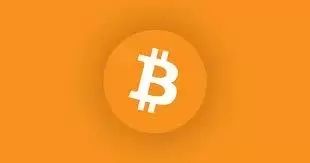 |
|
 |
|
 |
|
 |
|
 |
|
 |
|
 |
|
 |
|
 |
|
 |
|
 |
|
 |
|
 |
|
 |
|
 |
|
去中心化金融(DeFi)彻底改变了金融格局,提供由区块链技术支持的无需信任、无需许可且透明的金融服务。 DeFi 中最重要的创新之一是借贷,它允许用户在没有银行等中介机构的情况下借入和借出加密资产。 Aave、Compound 和 MakerDAO 等 DeFi 借贷协议实现了贷款的民主化,使用户能够通过闲置资产赚取收益或立即借入资金。

DeFi lending has undergone a remarkable evolution, transitioning from over-collateralized crypto-native lending to integrating real-world assets (RWAs) as collateral. This shift has been driven by the limitations of early DeFi lending models and the increasing demand for DeFi to interoperate with traditional finance.
DeFi 贷款经历了显着的演变,从过度抵押的加密货币原生贷款过渡到整合现实世界资产(RWA)作为抵押品。这种转变是由早期 DeFi 借贷模式的局限性以及 DeFi 与传统金融互操作的需求不断增长推动的。
In the early stages of DeFi, lending protocols like MakerDAO, Compound, and Aave offered a unique alternative to traditional lending systems. Borrowers could obtain loans without intermediaries, extensive credit checks, or centralized control. However, these protocols relied on a foundation of over-collateralization to mitigate risk in the absence of credit scores or borrower history.
在 DeFi 的早期阶段,MakerDAO、Compound 和 Aave 等借贷协议为传统借贷系统提供了独特的替代方案。借款人无需中介机构、广泛的信用检查或集中控制即可获得贷款。然而,这些协议依赖于超额抵押的基础来在没有信用评分或借款人历史的情况下降低风险。
Understanding Over-Collateralization
了解超额抵押
In over-collateralized lending, borrowers must deposit collateral that exceeds the value of the loan they wish to take out. For example, a borrower seeking a $1,000 loan in a DeFi protocol like Compound might need to deposit $1,500 worth of Ether (ETH) or another cryptocurrency. This over-colliteration acts as a buffer to protect the lender in case the value of the collateral declines or the borrower fails to repay the loan.
在超额抵押贷款中,借款人存入的抵押品必须超过他们想要贷款的价值。例如,借款人在像Compound这样的DeFi协议中寻求1,000美元的贷款可能需要存入价值1,500美元的以太币(ETH)或其他加密货币。这种过度抵押可以作为缓冲,在抵押品价值下降或借款人无法偿还贷款的情况下保护贷方。
This reliance on over-collateralization is a direct consequence of DeFi’s trustless nature. In traditional lending, banks assess borrowers’ creditworthiness based on credit scores, financial history, and income, which helps reduce the risk of default. In contrast, DeFi protocols operate without such systems, relying solely on smart contracts and collateral to secure loans.
这种对超额抵押的依赖是 DeFi 去信任性质的直接后果。在传统贷款中,银行根据信用评分、财务历史和收入评估借款人的信用度,这有助于降低违约风险。相比之下,DeFi 协议在没有此类系统的情况下运行,仅依靠智能合约和抵押品来获得贷款。
Benefits of Over-Collateralized Lending
超额抵押贷款的好处
Despite its inefficiencies, over-collateralized lending played a crucial role in the initial growth of DeFi lending. It offered several advantages:
尽管效率低下,超额抵押贷款在 DeFi 贷款的最初增长中发挥了至关重要的作用。它具有以下几个优点:
Limitations of Over-Collateralization
超额抵押的局限性
While over-collateralized lending protocols enabled the rapid growth of DeFi, they also presented several challenges that limited their scalability:
虽然超额抵押贷款协议促进了 DeFi 的快速增长,但它们也带来了一些限制其可扩展性的挑战:
The Shift Toward Under-Collateralization
向抵押不足的转变
Recognizing the limitations of over-collateralized lending, the DeFi space began exploring alternatives that would allow for under-collateralized or even uncollateralized loans, similar to traditional lending. This shift aimed to make DeFi lending more efficient, accessible, and integrated with real-world financial systems.
认识到过度抵押贷款的局限性后,DeFi 领域开始探索允许抵押不足甚至无抵押贷款的替代方案,类似于传统贷款。这一转变旨在使 DeFi 借贷更加高效、便捷并与现实世界的金融系统集成。
The Emergence of Under-Collateralized Lending
抵押贷款不足的出现
Under-collateralized lending protocols reduce the amount of collateral required to secure a loan. In some cases, these protocols enable users to borrow more than the value of the collateral they deposit. This shift is made possible through mechanisms that assess borrower risk and reputation, including on-chain credit scores, trust networks, and tokenized credit ratings.
抵押不足的贷款协议减少了获得贷款所需的抵押品数量。在某些情况下,这些协议使用户能够借入超过其存入抵押品价值的资金。这种转变是通过评估借款人风险和声誉的机制实现的,包括链上信用评分、信任网络和代币化信用评级。
One notable example of under-collateralized lending is TrueFi, a protocol that allows for uncollateralized lending based on borrower reputation. Borrowers on TrueFi are vetted through a rigorous approval process, and lenders rely on borrower reputation and financial metrics to assess risk. While this introduces some centralized elements into the otherwise decentralized DeFi space, it represents a significant step toward making DeFi lending more capital efficient.
抵押不足贷款的一个著名例子是 TrueFi,这是一种允许根据借款人声誉进行无抵押贷款的协议。 TrueFi 上的借款人经过严格的审批流程进行审查,贷款人则依靠借款人的声誉和财务指标来评估风险。虽然这将一些中心化元素引入了原本去中心化的 DeFi 领域,但它代表了朝着提高 DeFi 借贷资本效率迈出的重要一步。
Another approach to under-collateralization involves credit delegation, where users with excess collateral delegate borrowing power to trusted third parties. Aave, for example, introduced credit delegation through its “Aave Credit Delegation” system. In this model, a user with deposited collateral can delegate their borrowing capacity to another party, who can then take out a loan without needing to provide collateral themselves. This model leverages social trust and reputation to facilitate under-collateralized lending.
另一种解决抵押不足的方法涉及信贷委托,即拥有过多抵押品的用户将借款权委托给受信任的第三方。例如,Aave 通过其“Aave 信用委托”系统引入了信用委托。在这个模型中,存有抵押品的用户可以将其借贷能力委托给另一方,然后另一方可以在不需要自己提供抵押品的情况下获得贷款。这种模式利用社会信任和声誉来促进抵押不足的贷款。
Advantages of Under-Collateralized Lending
抵押不足贷款的优点
Under-collateralized lending introduces several benefits over traditional over-collateralized models:
与传统的超额抵押贷款模型相比,抵押不足贷款具有以下几个优点:
However, under-collateralized lending also introduces new risks, particularly in terms of borrower default. DeFi protocols must carefully balance risk assessment, reputation management, and decentralized governance to ensure the sustainability of under-collateralized lending.
然而,抵押不足的贷款也会带来新的风险,特别是在借款人违约方面。 DeFi 协议必须仔细平衡风险评估、声誉管理和去中心化治理,以确保抵押不足贷款的可持续性。
Real-World Asset (RWA) Integration: The Next Frontier of DeFi Lending
现实世界资产 (RWA) 整合:DeFi 借贷的下一个前沿
The most transformative development in DeFi lending is the integration of real-world assets (RWAs) into the lending protocols. This shift bridges the gap between the traditional financial system and DeFi, unlocking a vast market of tangible assets that can be tokenized and used in DeFi lending.
DeFi 借贷领域最具变革性的发展是将现实世界资产(RWA)整合到借贷协议中。这一转变弥合了传统金融体系和 DeFi 之间的差距,释放了可代币化并用于 DeFi 借贷的有形资产的广阔市场。
What Are Real-World Assets?
什么是现实世界资产?
Real-world assets refer to physical or traditional financial assets that exist outside the blockchain but can be tokenized and represented on-chain. These assets include real estate, commodities, invoices, bonds, and equities. By tokenizing RWAs, DeFi protocols can extend lending services to include a wider range of collateral types, significantly expanding the market size for DeFi lending.
现实世界资产是指存在于区块链之外但可以在链上代币化和表示的实物或传统金融资产。这些资产包括房地产、商品、发票、债券和股票。通过将 RWA 代币化,DeFi 协议可以将借贷服务扩展到更广泛的抵押品类型,从而显着扩大 DeFi 借贷的市场规模。
The Role of Tokenization
代币化的作用
Tokenization is the process of converting real-world assets into digital tokens that can be traded and used on blockchain platforms. In the context of DeFi lending, tokenized real-world assets can be used as collateral, just like cryptocurrencies. For example, a real estate property could be tokenized and represented as digital tokens on a blockchain, allowing the owner to use these tokens as collateral for a DeFi loan.
代币化是将现实世界的资产转换为可以在区块链平台上交易和使用的数字代币的过程。在 DeFi 借贷的背景下,代币化的现实世界资产可以用作抵押品,就像加密货币一样。例如,房地产可以被代币化并在区块链上表示为数字代币,允许所有者使用这些代币作为 DeFi 贷款的抵押品。
Tokenization enables fractional ownership of assets,
代币化可以实现资产的部分所有权,
免责声明:info@kdj.com
所提供的信息并非交易建议。根据本文提供的信息进行的任何投资,kdj.com不承担任何责任。加密货币具有高波动性,强烈建议您深入研究后,谨慎投资!
如您认为本网站上使用的内容侵犯了您的版权,请立即联系我们(info@kdj.com),我们将及时删除。
-

- 比特币真的可以达到每枚硬币100万美元吗?
- 2025-04-03 18:55:13
- 长期以来,比特币一直是金融界的终极过山车。从2009年作为利基数字实验的卑微开始到今天的数量千万美元资产类别的地位
-

- 民主党立法者按SEC调查特朗普总统与世界自由财务的联系
- 2025-04-03 18:55:13
- 民主党立法者正在向美国证券交易委员会(SEC)施加有关唐纳德·特朗普总统与加密货币公司世界自由的联系的详细信息
-

-

-

-

-

-

-

- Memecoin市场继续从零售和机构投资者那里汲取资本
- 2025-04-03 18:35:13
- Memecoin市场继续从零售和机构投资者那里汲取资本,最新的链度指标表明这是一个值得关注的市场。


























































